When I was younger, airline loyalty programs were more fun. There were all sorts of secret rules and loopholes one could exploit to earn a ton of miles, qualify for elite status, and enjoy exclusive attention at the airport and in the air. Sure, every major program has changed drastically compared to 20 years ago, and they still do every year. However, most of those changes for some reason feel a bit boring. But then, in late 2024, an airline named SAS did something that shook things up. They launched their “Who Wants to be a EuroBonus Millionaire?” challenge, and it was a huge deal that kicked off what you might call a ‘gold rush’ for airline miles.
Imagine finding a treasure map where ‘X’ marks the spot for a chest filled with a million airline miles. That’s pretty much what these challenges are. After SAS saw how much excitement they could create, other airlines jumped on board, launching their own wild challenges with huge prizes.
So, we put together this guide to help you understand it all. We’ll break down every big challenge, explain how it works in simple terms, and tell you what the airlines get out of it. This is the one guide you’ll want to bookmark and come back to. We promise to keep it updated.
TL;DR
- It All Started with SAS: One super popular challenge from SAS in late 2024 got this whole trend started.
- Different Kinds of Challenges: Not all challenges are the same. Some guarantee a prize if you finish (Completion), some are a race against others (Race), and some are just a lottery (Sweepstakes).
- It’s All About Risk vs. Reward: Airlines are trying to create buzz. For you, it’s about figuring out if the prize is worth the cost and effort.
- A Warning Story: Turkish Airlines tried to do a challenge and had to cancel it almost immediately. It’s a great example of what happens when an airline makes a promise it can’t keep.
- What’s Next?: Airlines are getting smarter. Expect to see more creative challenges that are less risky for them but still fun for us.
Grand Challenges vs. Traditional Million Miler
Before we go any further, let’s get one thing straight. These new “grand challenges” are totally different from the “Million Miler” programs at airlines like United, Delta, and American Airlines.
-
Traditional Million Miler Status (The Marathon): This is your reward for sticking with one airline for, like, 10, 20, or even 30 years. When you’ve flown a million miles with them, they give you elite status (like Gold or Platinum) for the rest of your life. It’s a lifetime achievement award for being a super loyal customer.
-
New Grand Challenges (The Sprint): These are like a game show. They’re short, intense, and have a crazy-hard goal with a tight deadline, usually just a few months. The prize is huge and you get it right away: a million points, a massive travel fund, or even elite status for 25 years. They’re a test of your planning skills and your sense of adventure, not just your long-term loyalty.
This guide is all about the sprint, the fun, high-stakes world of these new challenges.
Full List of Airlines with Grand Loyalty Challenges: A Quick Comparison
Here’s a quick look at the biggest challenges we’ve seen. This table helps you see how they stack up against each other.
| Airline | Challenge Name | Grand Prize | Estimated Value (USD) | Model | Core Requirement | Timeframe |
|---|---|---|---|---|---|---|
| SAS | EuroBonus Millionaire | 1,000,000 Points | $10k - $30k+ | Completion | Fly 15 unique SkyTeam partners | ~3 Months |
| JetBlue | 25 for 25 | 25 Yrs Mosaic Status | Tens of thousands | Lifetime Reward | Fly to 25 unique JetBlue airports | ~6 Months |
| Etihad | Extraordinary Challenge | 5,000,000 Miles | ~$70,000 | Race | Fly to 15 new Etihad routes | ~1 Year |
| Turkish | 6 Continents Challenge | 1,000,000 Miles | ~$15,000 | Completion | Fly to 6 continents via IST | Terminated |
| Ethiopian | 1M Sweepstakes | 200,000 Miles (x5) | ~$3,000 | Sweepstakes | Fly 5 specific round-trips | ~6 Months |
| Lufthansa | My LH Group Challenge | 100,000 Miles | ~$1.2k - $2.5k+ | Completion | Fly 7 unique LH Group partners | ~3 Months |
In This Article
- The SAS EuroBonus Millionaire Challenge
- The Full List of Grand Loyalty Challenges
- JetBlue's '25 for 25'
- Etihad's 'Extraordinary Challenge'
- Turkish Airlines Botched Challenge
- Ethiopian's Sweepstakes
- Lufthansa's Cautious Copy: The 'My Lufthansa Group' Challenge
- How to Actually Do One of These Challenges (A Beginner's Guide)
- Your Secret Weapon: Planning Challenges with AwardFares
- What's Next for the Frequent Flyer Gold Rush?
- Simple Explanations: Key Words You Need to Know
- Frequently Asked Questions (FAQ)
The One That Started It All: SAS EuroBonus Millionaire Challenge
The challenge that kicked everything off was the SAS “Who Wants to be a EuroBonus Millionaire?” challenge. It was the shot heard ‘round the loyalty world. SAS was making a big move to a new group of airline partners called SkyTeam, and they used this challenge to turn a boring corporate change into a fun, global event.

The Prize: A Million-Point Welcome Mat
SAS had a few prize levels, but nobody cared about the small ones. All eyes were on the grand prize.
- Fly 5 different SkyTeam airlines: Get 10,000 bonus points. (Nice, but not life-changing).
- Fly 10 different SkyTeam airlines: Get 100,000 bonus points. (That’s a really solid prize!).
- Fly 15 different SkyTeam airlines: Get 1,000,000 bonus EuroBonus points. (This was the prize that made everyone go crazy).
So, what’s a million points actually worth? We’ve covered that in detail here. Think of points like a special currency for flights. In cash, it’s worth at least $10,000. But if you know how to use points for fancy seats, the value goes way up. A business class flight from the U.S. to Europe can cost 50,000 points. With a million points, you could take that amazing trip 20 times. It was enough points for many incredible vacations (sure, as long as there are seats available and the currency does not devalue quickly).
The Rules, Made Simple
The idea was simple, but doing it was hard.
- The Deadline: You had to do all your flying in a super short time: from October 8 to December 31, 2024. That’s less than three months to fly on 15 different airlines!
- The Process: You had to make sure your SAS EuroBonus number was on every single flight booking. If you forgot, the flight wouldn’t count.
- The Catch: It had to be 15 different operating carriers. This is a key detail. It means the airline that actually flies the plane. So if you booked a Delta flight on Delta.com, but the plane was actually an Air France plane, it counted as flying Air France.
- The Big Help: At first, you had to pay for all the flights with cash. But SAS listened to people and made a huge change: they started letting “award flights” (flights you pay for with points) count too. This was a game-changer because it allowed people to use their existing points to complete the challenge at a much lower cost.
Pro Tip
The Game-Changer: The decision to allow award flights was the single most important change. It transformed the challenge from a pure cash-spend for the wealthy into a puzzle that could be solved with points from credit cards, opening the door for thousands of travel hackers.
Why It Was Genius for SAS
From the airline’s point of view, this was a brilliant move.
- The Goal: SAS had just joined a new “team” of airlines called SkyTeam. They wanted their customers to try out their new partners, like Delta, Air France, and Korean Air. This challenge basically forced people to do just that.
- The Perfect Balance: SAS offered a prize everyone wanted, but made the task so hard that they knew not everyone could do it. They got all the buzz from 50,000 people signing up, but only about 900 people actually won the million points (I was one of them, and we’ve covered the whole trip in the AwardFares blog). So, they got a massive marketing campaign for a fraction of the cost, and their most dedicated fans became their best advertisers.
SAS showed everyone that people are hungry for these kinds of fun, travel-based games.
The Full List of Grand Loyalty Challenges
After everyone saw how successful the SAS challenge was, a bunch of other airlines decided to try their own versions. Here’s a look at the most important ones.
JetBlue’s ‘25 for 25’: The Prize of a Lifetime
In mid-2025, JetBlue jumped in with what might be the craziest and most valuable prize yet. For its 25th birthday, the airline’s “25 for 25” challenge offered something that lasts: a quarter-century of elite status.

The Prize: 25 Years of VIP Treatment
This wasn’t just a one-time gift; it’s a prize that keeps paying you back for years.
- Level 1 (Fly to 15 cities): Get 150,000 bonus points.
- Level 2 (Fly to 20 cities): Get another 200,000 bonus points (for 350,000 total).
- Level 3 (Fly to 25 cities): Get 25 years of Mosaic 1 status, plus all the points.
So, what’s 25 years of status really worth? A lot! Mosaic 1 status gives you two free checked bags for you and your family on every single flight. If you’re a family of four and you fly just twice a year, that free baggage perk alone could save you over $10,000 over those 25 years. Add in free seat selection with extra legroom, getting to board first, and free drinks on the plane, and the value is just huge. This prize was designed to make you a JetBlue fan for life. That could become more rewarding in light of their new tighter collaboration with United: Blue Sky.
Long-Term Value
A Prize for Life, Not Just a Trip: Unlike points that can be devalued, a long-term status grant is a rare prize that offers compounding value. The free checked bags alone could save a family thousands of dollars over the years, making this one of the most practically valuable challenges ever launched.
The Rules, Made Simple
What was great about this challenge was how simple the rules were.
- The Goal: Fly into 25 different JetBlue airports. Where you started didn’t matter, only where you landed.
- The Deadline: You had a good amount of time—about six months, from June 25 to December 31, 2025.
- The Best Part: Just like SAS, JetBlue let award flights count. This was amazing because it meant you could use points from credit cards like Chase or Amex to book almost all the flights, making the actual cash cost very low for smart travelers.
- The Only Catch: You couldn’t book their cheapest, most basic ticket, “Blue Basic.”
How People Did It
Still ongoing. If you read online, travel hackers are getting creative. They planned trips to collect destinations, like hopping between all the islands JetBlue flies to in the Caribbean, or flying a bunch of short, cheap flights from cities like Fort Lauderdale or Boston. The prize was so good that it became a fun puzzle for the whole travel community to solve.

Etihad’s ‘Extraordinary Challenge’: A Race Around the World
Etihad Airways, based in Abu Dhabi, launched its own challenge, but with a totally different twist. Their “Extraordinary Challenge” wasn’t a task for everyone to complete; it was a high-stakes race with only a few winners.

The Prize: A Winner-Take-Most Race
Instead of giving a prize to everyone who finished, Etihad set up a podium.
- First Place: 5,000,000 Etihad Guest miles
- Second Place: 3,000,000 Etihad Guest miles
- Third Place: 1,000,000 Etihad Guest miles
What’s 5 million miles worth? Enough for over $70,000 in fancy travel. But here’s the kicker: if you came in fourth place, you got… nothing. This “all-or-nothing” style was a big gamble for anyone trying it.
Etihad realized this might scare people off, so they cleverly added “Milestone” prizes. The first 100 people to visit 5 and 10 of the required cities received a smaller bonus of 25,000 and 100,000 miles, respectively. This gave more people a reason to try, even if they knew they couldn’t win the grand prize.
Proceed with Caution
High Risk, High Reward: The “Race” model is a huge gamble. Unlike completion challenges, you can spend a significant amount of time and money and walk away with nothing. Only attempt this if you were planning similar trips anyway or have a very high tolerance for risk.
The Rules, Made Simple
- The Goal: Be the fastest person to fly to 15 of Etihad’s new destinations (like Atlanta, Prague, or Hanoi).
- How the Race Works: The winner is the person who lands from their final flight first. And to break a tie, they looked at who booked that last flight the earliest. This encouraged people to plan and pay for their trips way in advance.
- The Big Hurdle: You had to fly on Etihad planes for every trip. That meant almost every flight had to connect through their home base in Abu Dhabi. You couldn’t just fly from one challenge city to another, which made it way more time-consuming and expensive.
- The Deadline: A super long time to complete it, running until May 2026.
Why It Was Smart for Etihad
Etihad’s goal was simple: to get people to fly their new routes. By making it a race with only a few big winners, Etihad knew exactly how many miles they would have to give away. They didn’t have the risk of thousands of people winning, which is what got Turkish Airlines in trouble.
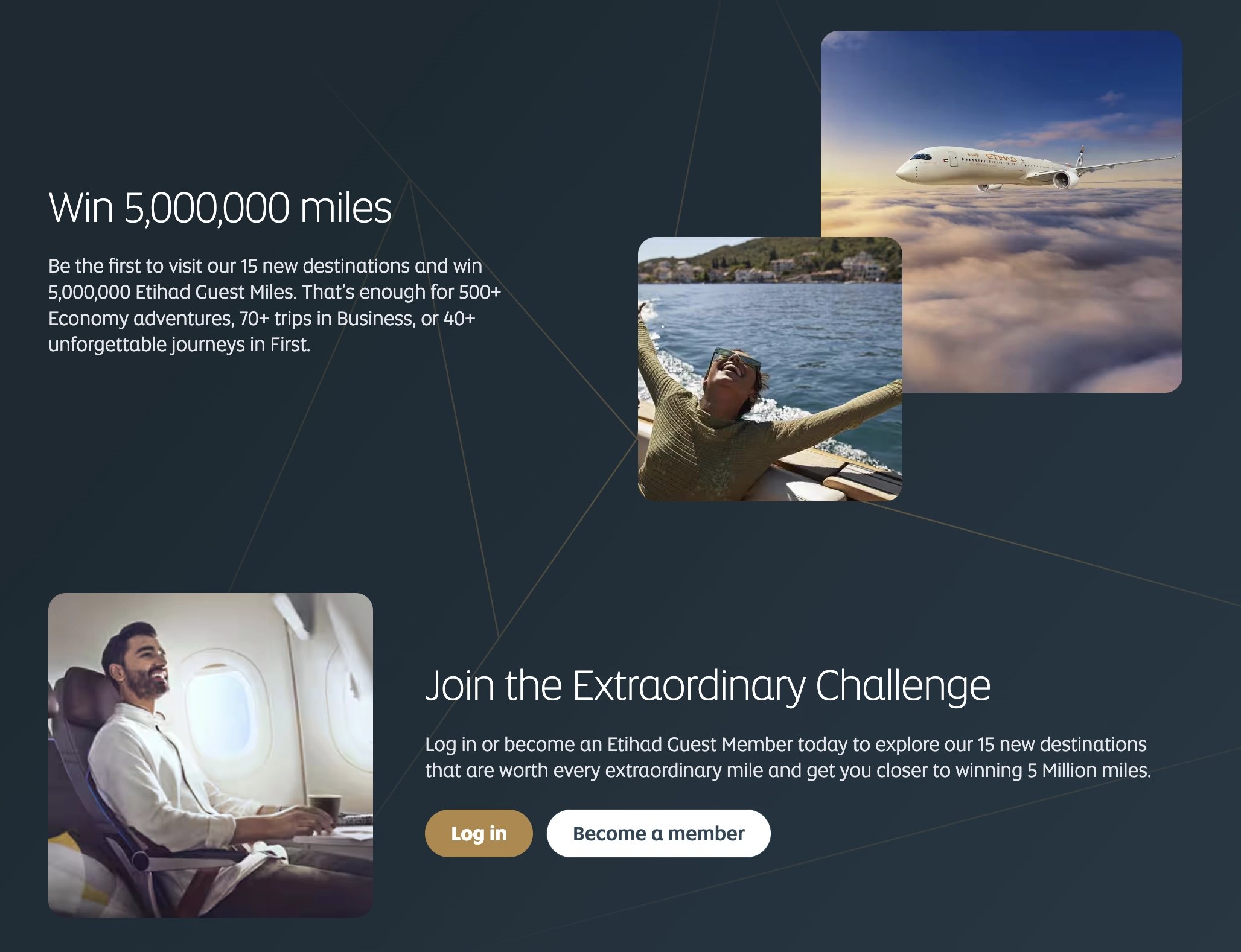
The Big Mess: Turkish Airlines’ Botched Challenge
In mid-2025, Turkish Airlines tried to launch its own ambitious “6 Continents Challenge,” and it quickly turned into a total disaster. It’s now the perfect warning story for what not to do.

The Prize: Too Good to Be True
The idea was awesome: fly to all six continents that Turkish Airlines serves in just four months, and you’d get 1,000,000 Miles&Smiles miles. That’s a prize worth around $15,000, so people were very interested.
The Rules That Caused the Disaster
- The Goal: Fly on a paid Turkish Airlines ticket to at least one city in Europe, Asia, Africa, North America, South America, and Australia/Oceania.
- The Big Hurdle: Every single flight had to connect through Istanbul. This made it a huge pain, basically requiring six separate long-haul round-trips.
- The Fatal Mistake: Turkish Airlines copied SAS and said anyone who finished the task would win the prize. They had no cap on the number of winners.
The Fatal Flaw
The Danger of a Blank Check: Turkish Airlines fell victim to “uncapped liability.” By promising a prize to everyone who finished, they wrote a blank check they couldn’t cash. This is the ultimate case study in why airlines must control their financial risk in these promotions.
The Panic Button
Turkish Airlines, an airline that loves to brag about flying to more countries than anyone, completely forgot how smart and dedicated frequent flyers are. The challenge went viral. Travel experts immediately started posting super-cheap ways to complete it, with some people figuring out how to do it for as little as $3,000.
The airline probably thought only a few rich business travelers would win. Instead, they were looking at the possibility of thousands of people winning a $15,000 prize. The people in their finance department must have freaked out.
So, on July 8, 2025, just twelve days after it started, Turkish Airlines hit the panic button and cancelled the promotion for anyone who hadn’t already bought a ticket. It was like throwing a huge party, seeing too many people show up, and then locking the doors. It was a huge embarrassment and a lesson in what happens when you make a promise you’re not ready to keep.
Ethiopian’s Sweepstakes: The Low-Effort Attempt
Ethiopian Airlines saw all the excitement and wanted to get in on the action, but… cheaply. Their “1 Million Miles Sweepstakes Challenge” wasn’t really a challenge at all; it was more like a small lottery.

The Prize: A Misleading Name
The airline called it a “million-mile” challenge, but that was sneaky. The total prize was 1 million miles, but it was split between five winners. Each winner only got 200,000 miles, a prize worth about $3,000.
The Rules: A Contest, Not a Challenge
- The Task: You had to fly five separate, paid round-trip flights to a list of specific cities.
- How You “Won”: Finishing the task didn’t mean you won. The five winners were picked from the group of people who finished. They gave priority to people who flew the fastest, bought more expensive tickets, and had been members of their program the longest.
The Airline’s Game: All Sizzle, No Steak
This was a challenge in name only. For anyone, the cost of buying five separate international round-trip flights would be way more than the $3,000 prize. And even after spending all that money, you had a tiny chance of being one of the five winners. It was a low-risk, low-effort attempt by the airline that didn’t create any real excitement.
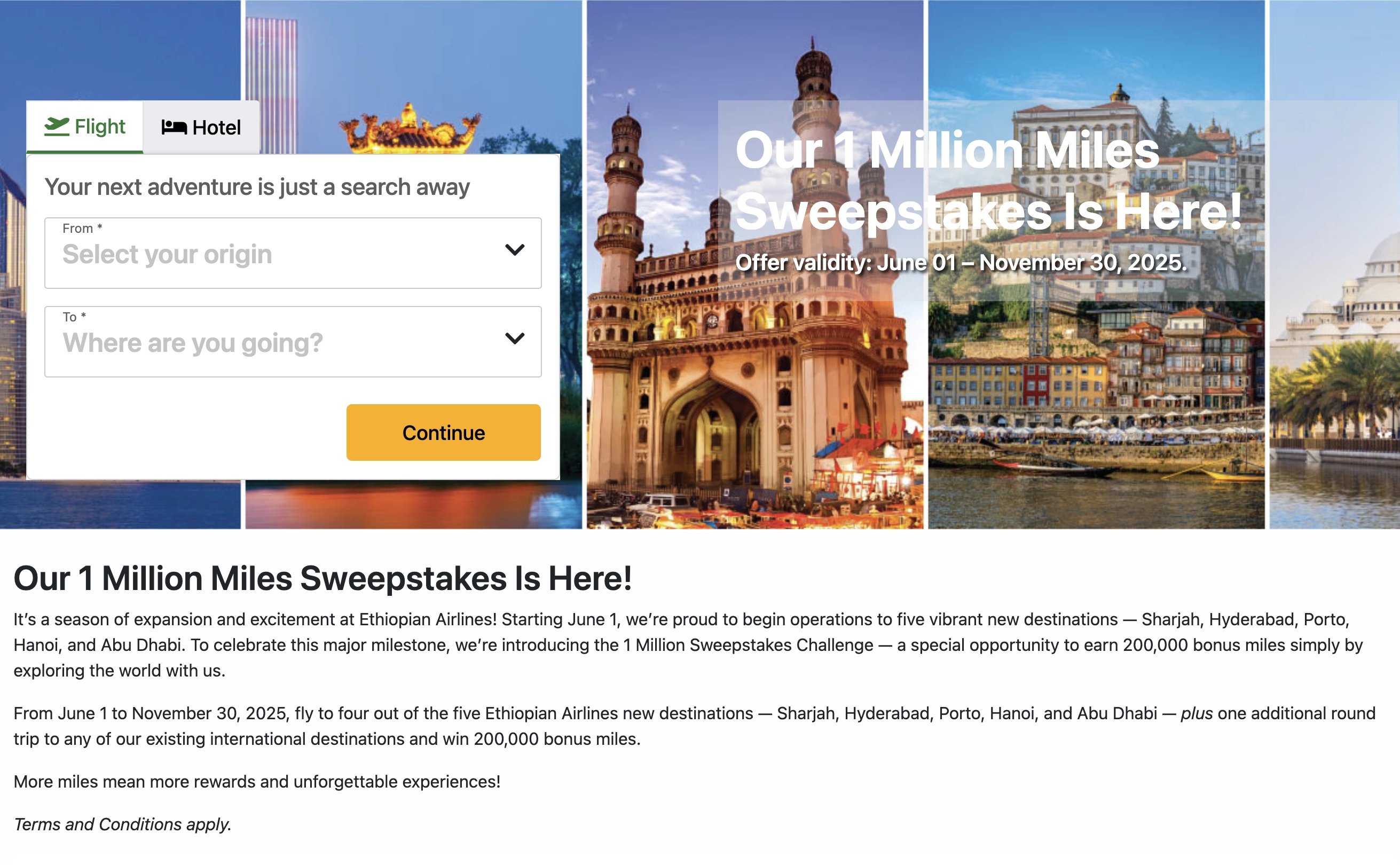
Lufthansa's Cautious Copy: The 'My Lufthansa Group' Challenge
Seeing the massive success of the SAS challenge, Lufthansa decided to dip its toes into the water, but with a much more conservative and controlled approach. Instead of a bold, headline-grabbing prize, they launched the “My Lufthansa Group Challenge,” a promotion that felt like a corporate-approved version of the SAS blockbuster.

The Prize: A Modest, Tiered Reward
The prize was 100,000 Miles&More miles, but you earned it in stages. This “Completion” style model meant anyone who finished the tasks would get the points, but the grand total was significantly less ambitious than SAS’s one million.
- Fly 3 different LH Group airlines: Get 5,000 bonus miles.
- Fly 5 different LH Group airlines: Get another 35,000 bonus miles.
- Fly 7 different LH Group airlines: Get a final 60,000 bonus miles, for a grand total of 100,000 miles.
While 100,000 miles is still a great prize (worth roughly $1,200-$2,500 depending on how you use them), it was clear Lufthansa wasn’t aiming to create the same level of global frenzy as SAS.
The Rules, Made Simple
The challenge was designed to keep flyers within the Lufthansa ecosystem.
- The Goal: Fly on up to seven different airlines within the Lufthansa Group.
- The Airlines: The list included Lufthansa, SWISS, Austrian, Brussels Airlines, Eurowings, and, strategically, the newly integrated ITA Airways.
- The Deadline: A short window from early May to July 31, 2025.
- The Big Catch: This wasn’t for everyone. It was a targeted offer that users had to find and activate inside their Miles&More app. If you weren’t selected, you couldn’t participate.
The Airline’s Game: A Low-Risk Copycat
This challenge was a textbook example of a low-risk marketing campaign.
- Controlled Costs: By capping the prize at 100,000 miles and making the challenge targeted, Lufthansa knew exactly what their maximum exposure was. There was no risk of a “Turkish Airlines-style” panic.
- Strategic Goal: The inclusion of ITA Airways was no accident. The challenge was a clever way to encourage loyal Lufthansa Group flyers to try out their newest partner, generating revenue and familiarity within their own network.
- Good Idea, Lacked the Edge: Ultimately, it was a smart but unexciting promotion. It rewarded existing loyal customers but lacked the “wow” factor needed to attract new ones or generate the massive buzz SAS achieved. It was a good idea, but it was missing a couple of zeros on the final prize to be truly epic.
How to Actually Do One of These Challenges (A Beginner’s Guide)
Are you feeling inspired or think you might want to try one of these someday? Here’s a simple checklist to run through before you even think about booking a flight.
Step 1: What is the Prize Really Worth to Me?
A million points sounds cool, but some points are better than others. A million points with an airline that flies everywhere is great. A million points with an airline that barely flies anywhere you want to go? Not so great. Ask yourself: Can I actually use these points for trips I want to take?. For example, after earning my million EuroBonus points, now I have a hard time using them given that I’m based in South America these days and there very little availability on SkyTeam flights. Great to have the points, but hard to use them!
Step 2: What’s the Total Cost? (It’s Not Just Flights)
This is the part that trips people up. You have to add up everything:
- The Flights: The biggest cost, for sure. Can you use the points you already have to book some of them?
- Flights to Get to Your Flights: You might have to buy a flight just to get to the city where your challenge adventure begins. That’s called a “positioning flight.”
- Hotels: You’ll need a place to sleep, even if it’s just for a few hours.
- Food and Taxis: Eating at airports and getting around cities costs money.
- Visas: Do you need a visa to enter any of the countries? That can cost time and money to get.
- Time Off Work: Don’t forget, you’ll probably have to use vacation days. That’s a real cost.
Step 3: What’s My Actual Chance of Winning?
This is the most important question. Figure out what kind of challenge it is:
- Completion Challenge (like SAS and JetBlue): If you finish the task, you 100% win. These are usually the ones worth trying.
- Race (like Etihad): Your chance is tiny. You’re racing against the most hardcore travelers in the world. It’s a huge risk.
- Sweepstakes (like Ethiopian): Your chance is basically zero. You’re just buying a very, very expensive lottery ticket. Stay away from these.
Step 4: Read the Fine Print. Then Read It Again.
Airlines hide all the important stuff in the fine print. What ticket types don’t count? Do you have to book on their website? What are the exact dates? One small mistake can ruin your whole effort.
Your Secret Weapon: Planning Challenges with AwardFares
Executing a grand challenge without the right tools is like trying to solve a Rubik’s Cube in the dark. You need to quickly find complex routes, verify availability on multiple airlines, and do it all on a budget. This is where AwardFares becomes indispensable.
Stop Guessing, Start Seeing
Our Timeline View cuts through the noise. Instead of searching day by day, you can see a whole month's availability at a glance, instantly spotting the dates with the most award seats available.
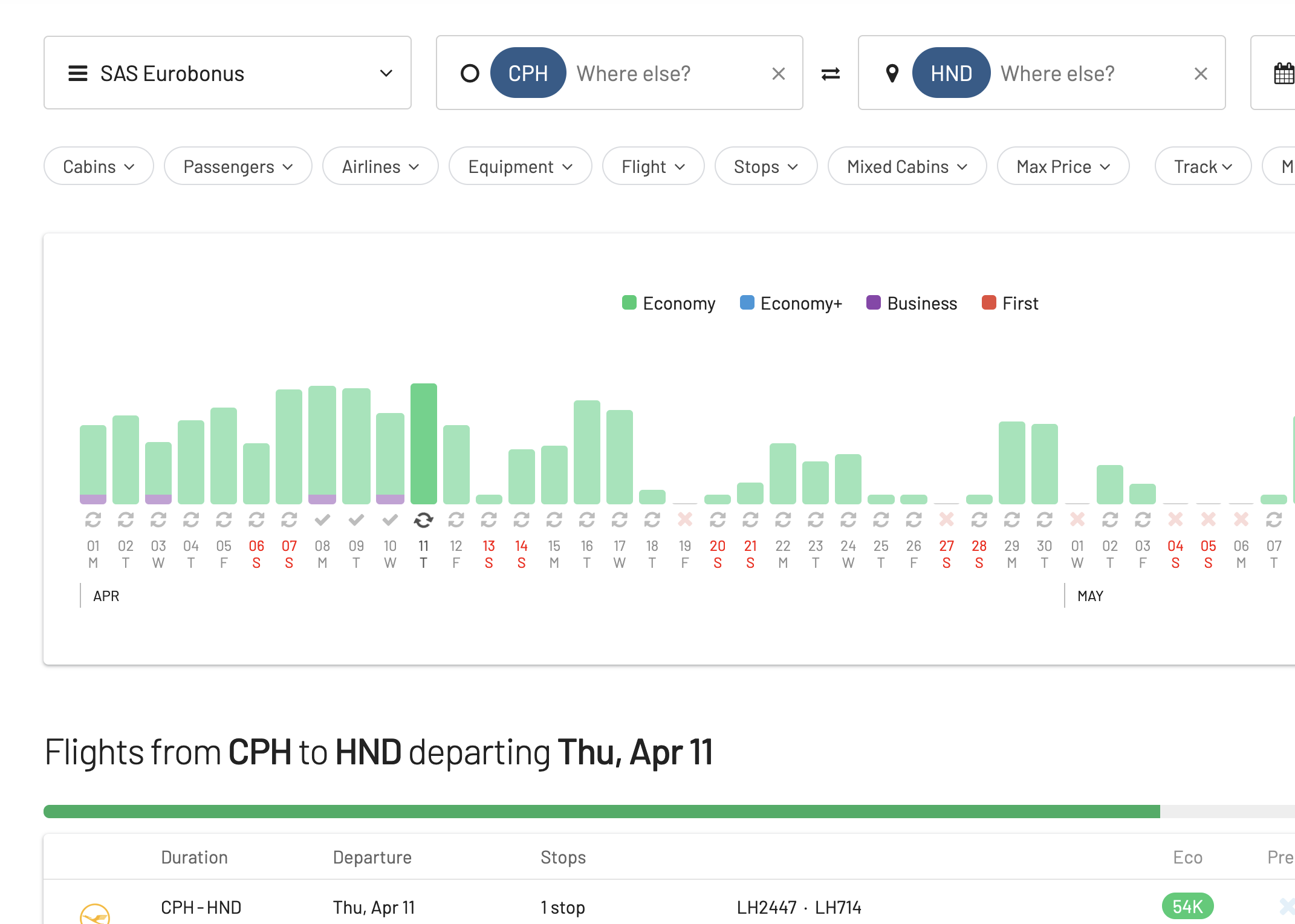
Find the (Real) Cheapest Flight
AwardFares lets you search multiple programs at once and compares the prices, showing you the "sweet spots" that save you tens of thousands of points.
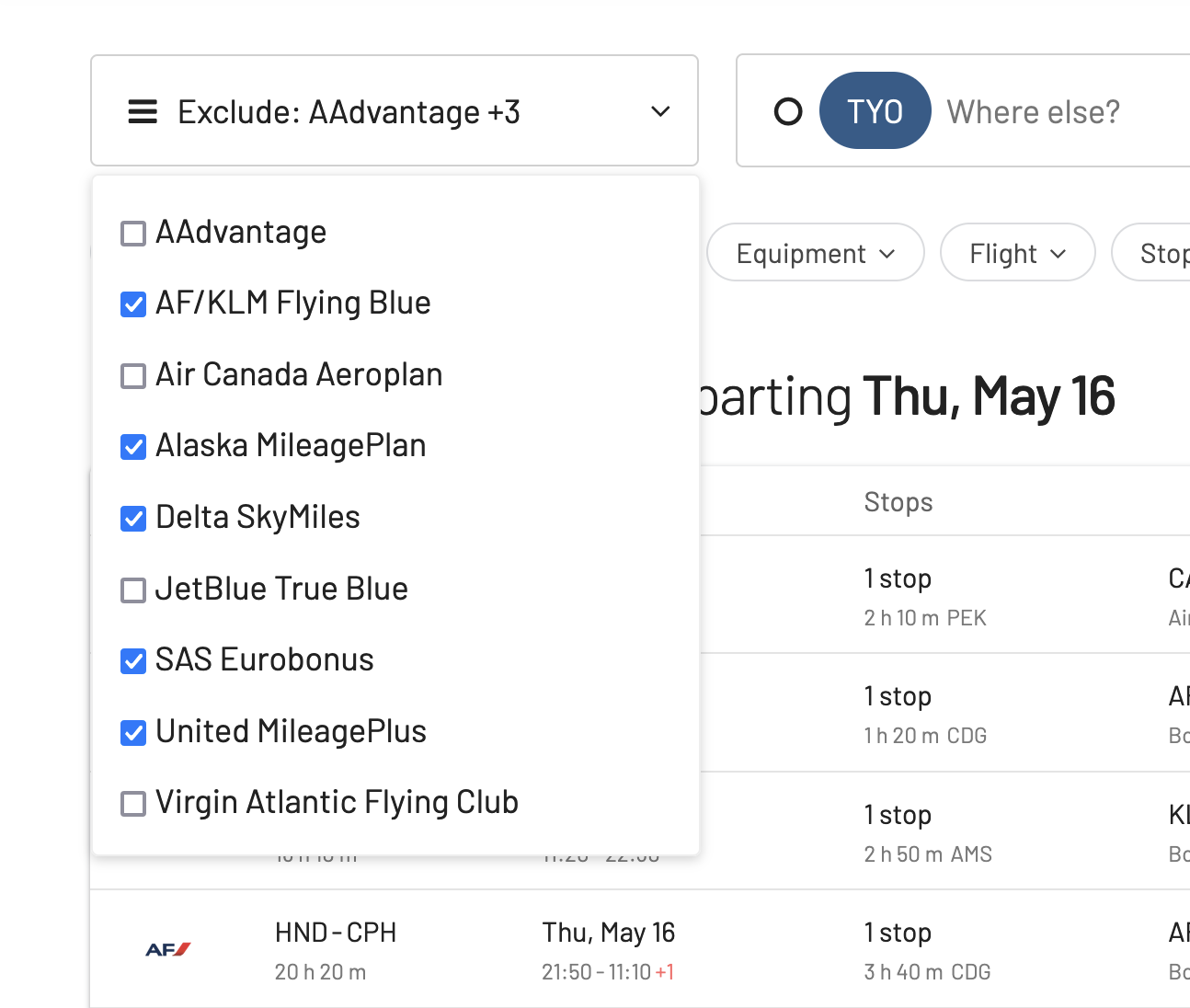
Uncover Hidden Availability
We show you all the options, including complex mixed-cabin itineraries and hard-to-find saver-level awards, giving you a complete picture of what's actually bookable.
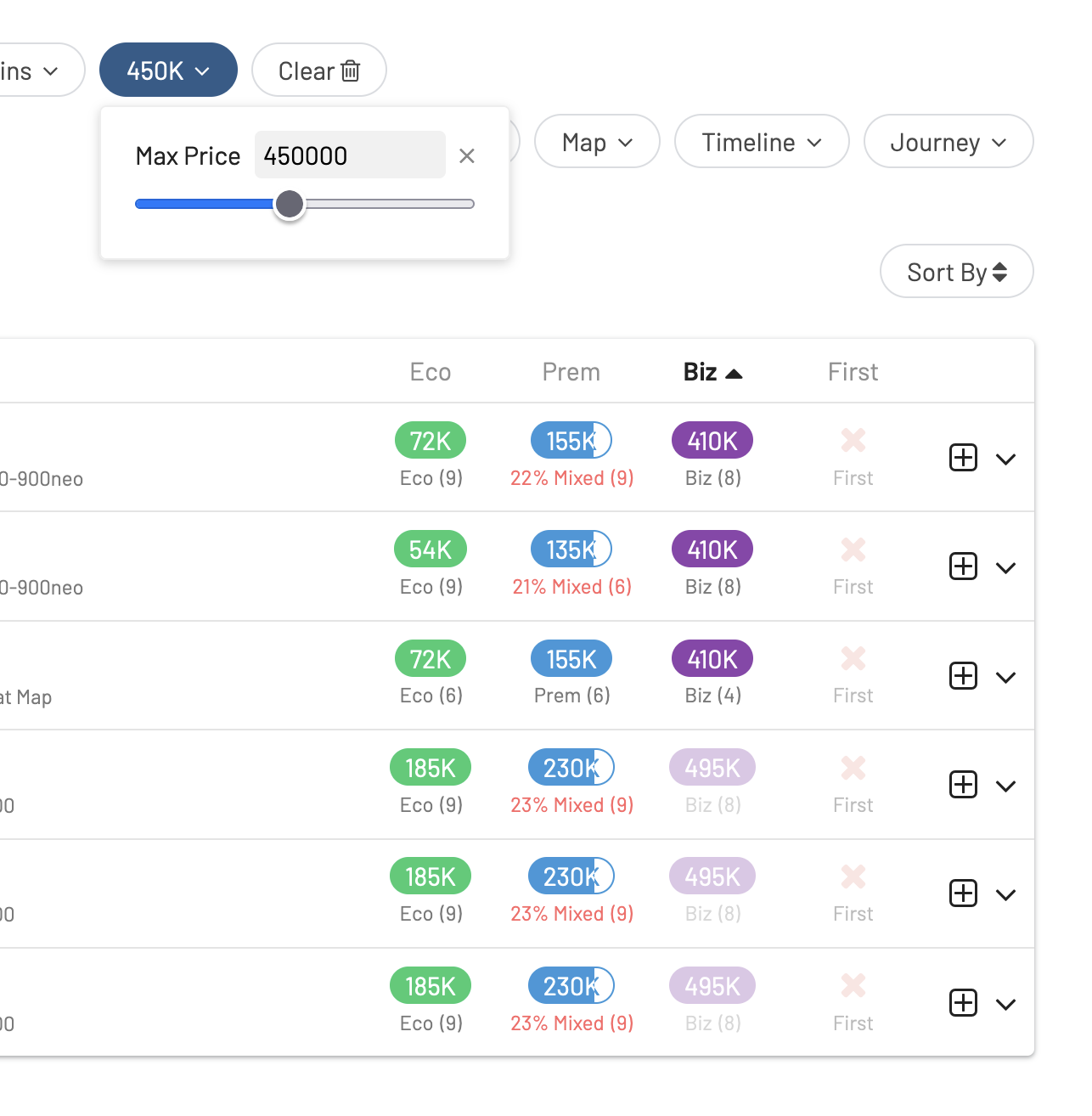
Never Miss a Seat Again
That perfect seat isn't available? Set an Alert on AwardFares. We'll monitor the flight 24/7 and email you the second it opens up, so you can grab it before anyone else does.
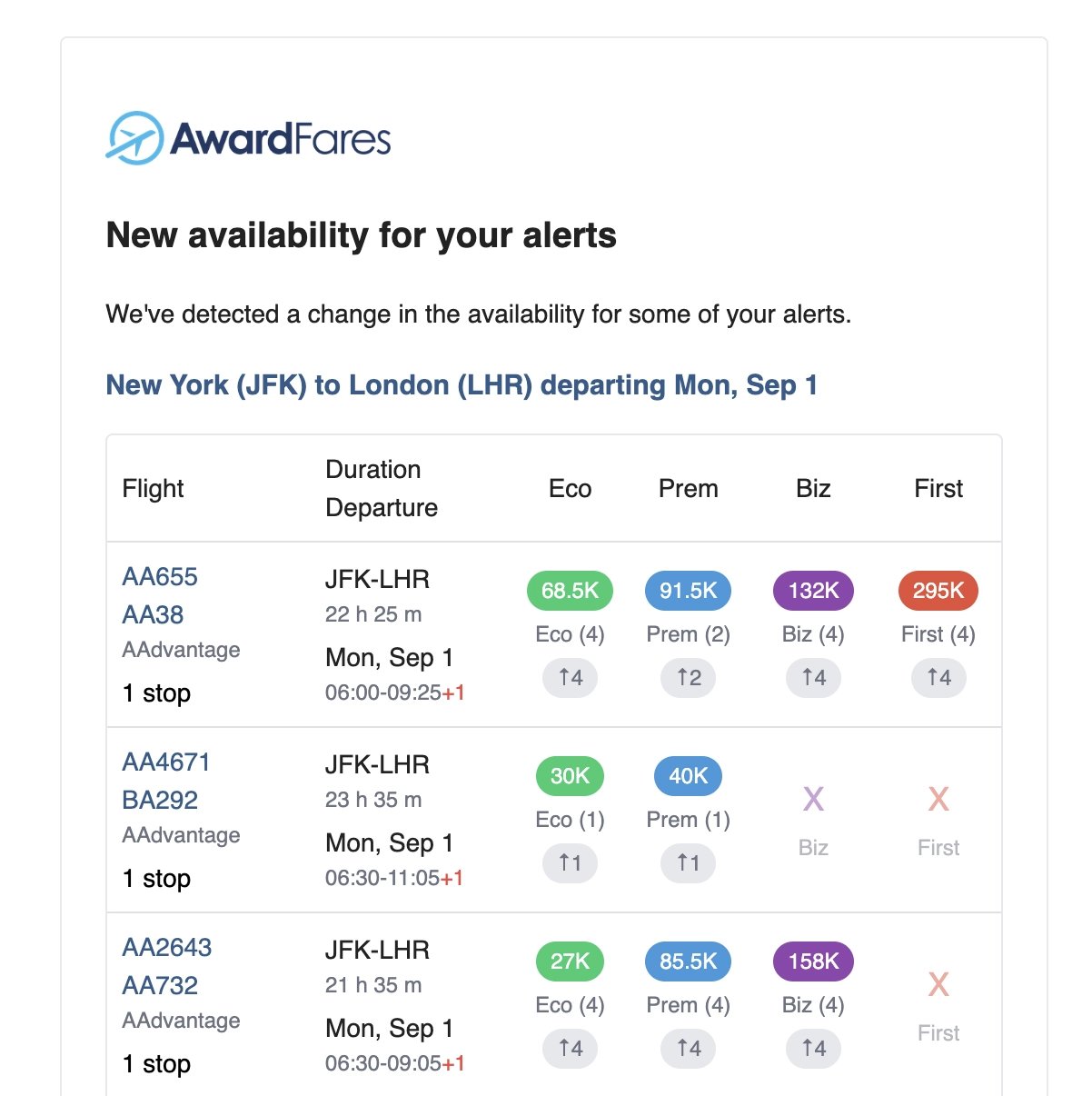
What’s Next for the Frequent Flyer Gold Rush?
These big challenges have taught both travelers and airlines a lot. They are not just a passing trend; they are here to stay, but they will probably change.
For Airlines: The big lesson was learned from the Turkish Airlines disaster: you have to control your risk. Airlines will be more careful about offering a prize to everyone who finishes.
For Travelers: The lesson is to be smart and do your homework. Look past the exciting headline and figure out the real cost and your real chance of winning. If a deal seems too good to be true, it probably is.
What to Expect
The Future is Capped: Expect future challenges to have built-in safety mechanisms. This could mean “first 1,000 to finish,” race-style formats, or targeted offers. The days of unlimited-winner challenges like SAS or Turkish Airlines are likely over.
So what’s next? Expect to see more challenges like Etihad’s, with a race for the big prize, but smaller milestone rewards, so more people can win something. Or we might see challenges that are capped, like “the first 1,000 people to finish win.” The days of just passively collecting points are fading. The million-mile gold rush has made loyalty programs a lot more fun and exciting.
Simple Explanations: Key Words You Need to Know
- Alliance: A team of airlines that work together. The big three are Star Alliance, SkyTeam, and oneworld. It means you can use your United points to fly on Lufthansa, because they’re on the same team.
- Award Flight: A flight you pay for with points instead of money. You’ll still have to pay the taxes and fees.
- Codeshare: This is a tricky one. It’s when an airline puts its own flight number on a plane that’s actually flown by another airline. For example, you book a flight on the American Airlines website with an AA flight number, but it’s a British Airways plane that shows up at the gate. For these challenges, what usually matters is the operating carrier.
- Operating Carrier: The airline whose name is physically on the side of the plane you’re flying on.
- Uncapped Liability: This is the financial danger an airline gets into when it promises a prize to everyone who finishes a task. They have no idea how many winners there will be, so they can’t control the cost. It’s like writing a blank check.
Frequently Asked Questions (FAQ)
Your Questions Answered
What's the difference between these "Grand Challenges" and a "Million Miler" program?
A “Grand Challenge” is a short-term game or contest, like a sprint. You have to do something hard in a few months to win a huge, immediate prize. A “Million Miler” program is a long-term reward for loyalty, like a marathon. You get lifetime status after flying a million miles with one airline over many, many years.
Are these challenges actually worth doing?
It depends on the type!
-
Completion Challenges (like SAS, JetBlue): Often, yes! If you can plan well and use points for some flights, the prize is usually worth more than what you spend.
-
Race/Sweepstakes Challenges (like Etihad, Ethiopian): Almost never. You could spend a ton of money and time and get nothing. The risk is just too high unless you are going to take those trips anyway.
Why did Turkish Airlines cancel their challenge so fast?
They panicked. They promised a huge prize to everyone who finished but didn’t realize how many people would figure out a cheap way to do it. When they saw it could cost them millions of dollars they hadn’t planned for, they pulled the plug. It’s a classic case of making a promise you can’t afford to keep.
Which airline started this whole thing?
The SAS “Who Wants to be a EuroBonus Millionaire?” challenge in late 2024 is the one everyone points to. It was so popular and created so much buzz that it inspired all the other airlines to try something similar.
Can my family and I do a challenge together?
Probably not. These challenges are almost always for one person and tied to their individual account. Each person would have to complete all the flights themselves to win the prize.
Do I need special credit cards for these?
You don’t need them, but they are a massive help. Credit cards that earn points you can transfer to airlines (like Amex or Chase cards) are like a secret weapon. They let you pay for flights with points instead of cash, which can make a challenge much cheaper to complete.
Become a Challenge Pro
Ready to tackle the next grand challenge? Our guides have all the information you need to be a pro travel hacker and explore the world on points.
-
 EuroBonus
EuroBonusEarn 1 Million EuroBonus Points With SAS EuroBonus Millionaire Challenge
-
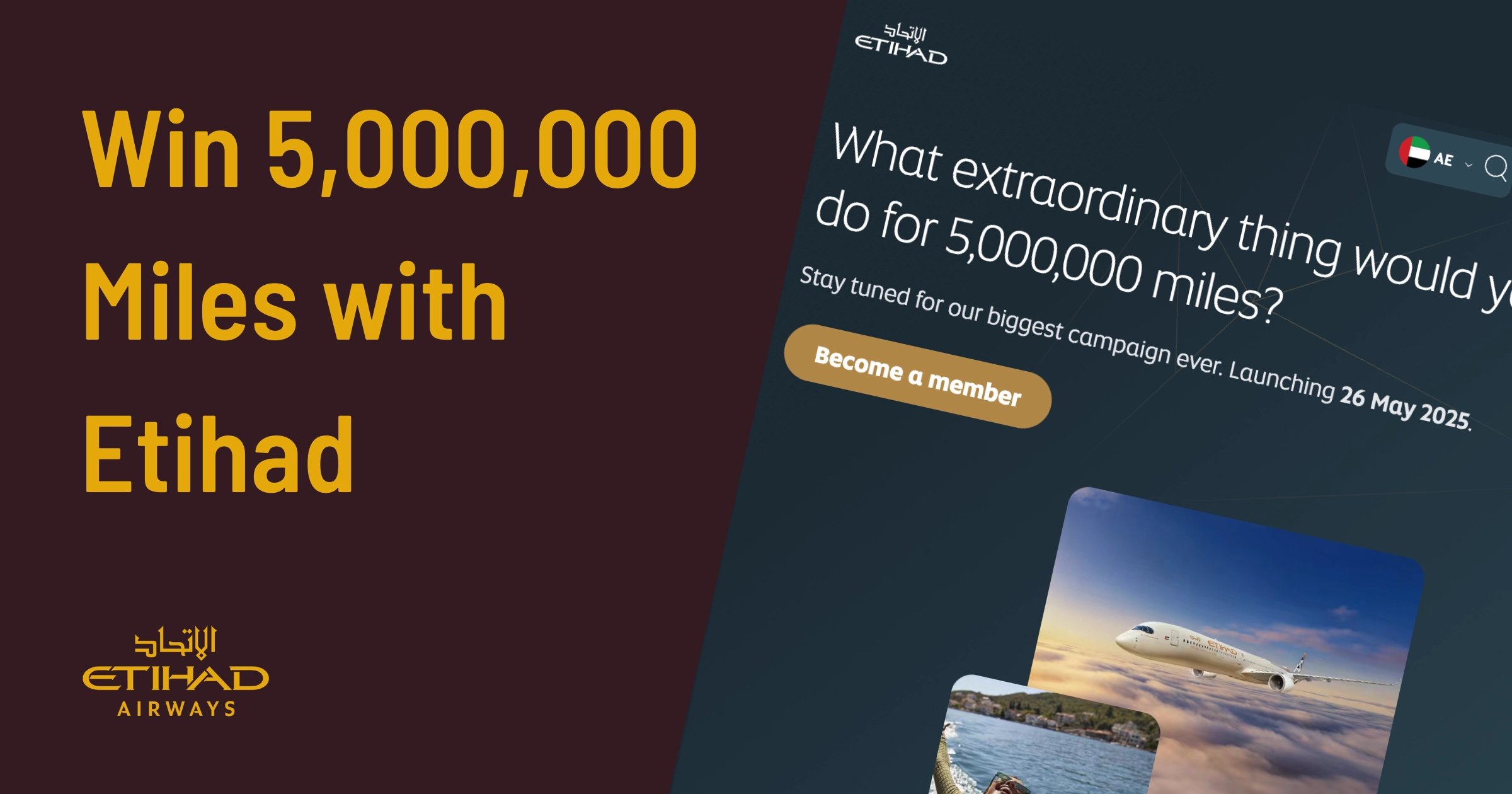 Etihad Guest
Etihad GuestWin up to 5 Million Etihad Guest Miles: Now with New Milestone Prizes (Extraordinary Challenge)
-
 TrueBlue
TrueBlueJetBlue's 25 for 25 Challenge: How to Earn 25 Years of Mosaic Status (Strategy & Tool)
-
 Miles&Smiles
Miles&SmilesScore 1 Million Miles Flying to 6 Continents with Turkish Airlines
 Aeromexico Rewards
Aeromexico Rewards Air Canada Aeroplan
Air Canada Aeroplan
 Air France / KLM Flying Blue
Air France / KLM Flying Blue Alaska MileagePlan
Alaska MileagePlan American Airlines AAdvantage
American Airlines AAdvantage Azul Fidelidade
Azul Fidelidade Delta SkyMiles
Delta SkyMiles Etihad Guest
Etihad Guest GOL Smiles
GOL Smiles Jetblue TrueBlue
Jetblue TrueBlue SAS EuroBonus
SAS EuroBonus Turkish Miles&Smiles
Turkish Miles&Smiles United MileagePlus
United MileagePlus Virgin Atlantic Flying Club
Virgin Atlantic Flying Club Virgin Australia Velocity
Virgin Australia Velocity